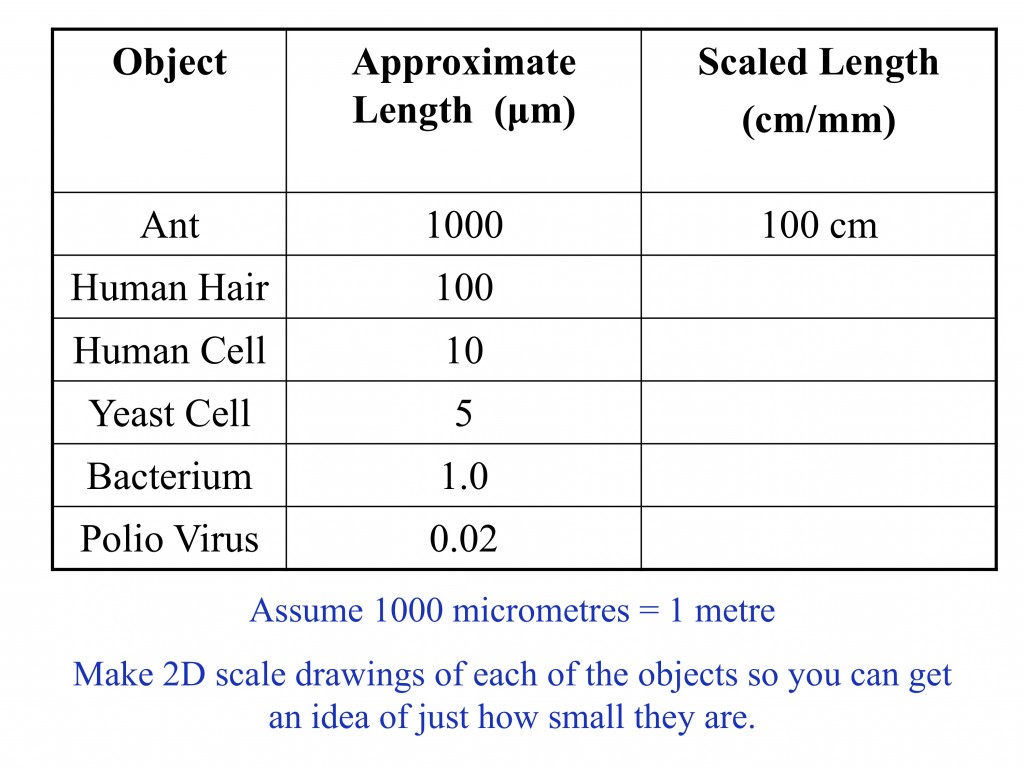Microorganisms and scale teaching resources
Worksheets and lesson ideas to challenge students aged 11 to 16 to think hard about scale when using the microscope (GCSE and Key Stage 3)
One of the main reasons bacteria are so successful is because they are small. This allows them to exist in a huge number of different habitats that would be unavailable to larger organisms and so gives them a big advantage. But how small are they? By getting students to build scale models of different organisms they can see for themselves how organisms differ in size and become familiar with converting between different units. It is well worth reviewing standard form before teaching this topic and make sure you help your students to zoom in and out with you!
 Microorganisms and scale
Microorganisms and scale
GCSE activity and worksheet to build scale drawings of microbes. Students switch between different units to build a scale model of a virus, bacterium and fungus. (PDF)
Check out this excellent link to help students appreciate the scale of the Universe.
Help students appreciate differences in scale
You can use this slide to help students appreciate differences in scale between mili, micro and nanometers. It could also be adapted to teach standard form and orders of magnitude. (PDF)
